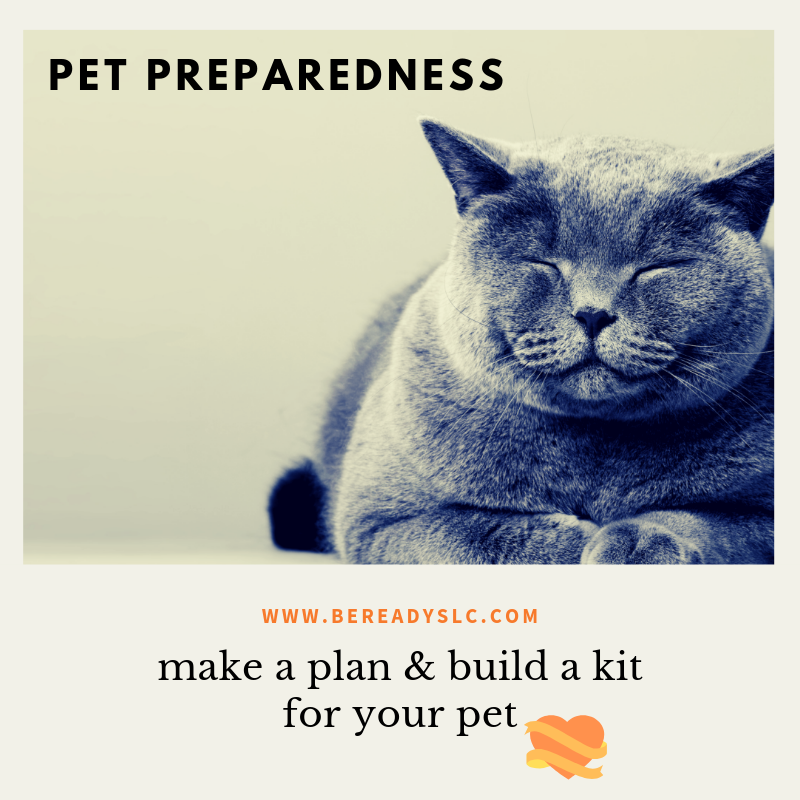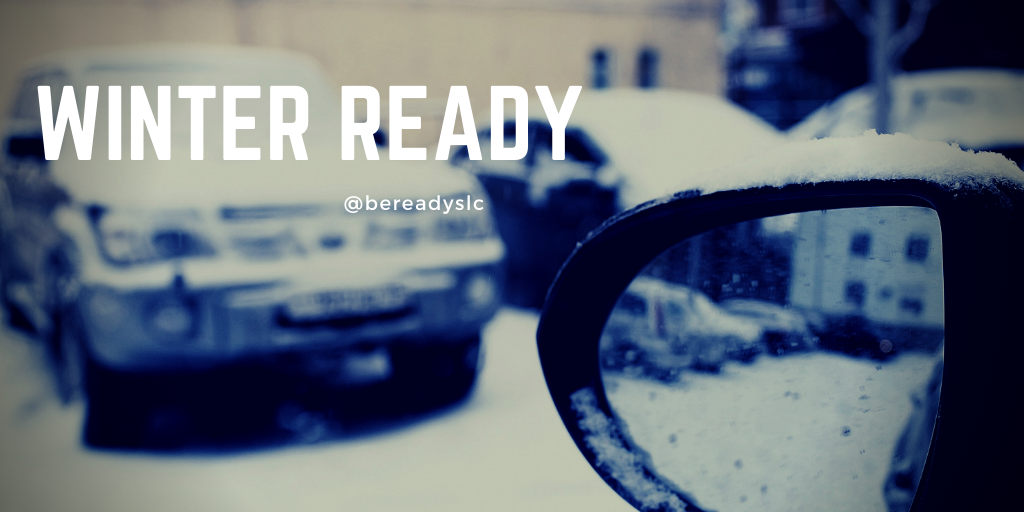Winter storms create a higher risk of car accidents, hypothermia, frostbite, carbon monoxide poisoning, and heart attacks from overexertion. Winter storms and blizzards can bring extreme cold, freezing rain, snow, ice, and high winds.
A winter storm can:
- Last a few hours or several days;
- Knock out heat, power, and communication services; and
- Place older adults, young children, and sick individuals at greater risk.
- Stay Safe During Winter Weather. Stay off roads if at all possible. If trapped in your car, then stay inside.
- Limit your time outside. If you need to go outside, then wear layers of warm clothing. Watch for signs of frostbite and hypothermia.
- Reduce the risk of a heart attack by avoiding overexertion when shoveling snow and walking in the snow.
Learn the signs of, and basic treatments for, frostbite and hypothermia.
Frostbite causes loss of feeling and color around the face, fingers, and toes.
- Signs: Numbness, white or grayish-yellow skin, firm or waxy skin.
- Actions: Go to a warm room. Soak in warm water. Use body heat to warm. Do not massage or use a heating pad.
Hypothermia is an unusually low body temperature. A temperature below 95 degrees is an emergency.
- Signs: Shivering, exhaustion, confusion, fumbling hands, memory loss, slurred speech or drowsiness.
- Actions: Go to a warm room. Warm the center of the body first—chest, neck, head and groin. Keep dry and wrapped up in warm blankets, including the head and neck.
Protecting your pets & animals

- Bring your companion animals indoors. – Ensure that you have supplies for clean up for your companion animals, particularly if they are used to eliminating outdoors (large plastic bags, paper towels, and extra cat litter).
- Create a place where your other animals can be comfortable in severe winter weather: – Horses and livestock should have a shelter where they can be protected from wind, snow, ice, and rain. – Grazing animals should have access to a protected supply of food and non-frozen water.
- Be aware of the potential for flooding when snow and ice melt and be sure that your animals have access to high ground that is not impeded by fencing or other barriers. You may not be able to get to them in time to relocate them in the event of flooding. – Ensure that any outbuildings that house or shelter animals can withstand wind and heavy snow and ice- Install snow fences in rural areas to reduce drifting snow on roads and paths, which could block access to homes, barns, and animals’ feed and water.
Prepare NOW
- Know your area’s risk for winter storms. Extreme winter weather can leave communities without utilities or other services for long periods of time.
- Prepare your home to keep out the cold with insulation, caulking, and weather stripping. Learn how to keep pipes from freezing. Install and test smoke alarms and carbon monoxide detectors with battery backups.
- Pay attention to weather reports and warnings of freezing weather and winter storms. Sign up for your community’s warning system. The Emergency Alert System (EAS) and National Oceanic and Atmospheric Administration (NOAA) Weather Radio also provide emergency alerts.
- Gather supplies in case you need to stay home for several days without power. Keep in mind each person’s specific needs, including medication. Do not forget the needs of pets. Have extra batteries for radios and flashlights.
- Create an emergency supply kit for your car. Include jumper cables, sand, a flashlight, warm clothes, blankets, bottled water, and non-perishable snacks. Keep the gas tank full.
- Learn the signs of, and basic treatments for, frostbite and hypothermia. For more visit: READY/WINTER
How to Protect Yourself During A Power Outage
- Keep freezers and refrigerators closed.
- Use a generator, but ONLY outdoors and away from windows.
- Do not use a gas stove or oven to heat your home.
- Disconnect appliances and electronics to avoid damage from electrical surges.
- Have alternate plans for refrigerating medicines or using power-dependent medical devices.
- Check with local officials about heating and cooling locations open near you.
Using Portable/Emergency Generators Safely
- Be sure to use your generator correctly
2. Position generators outdoors and well away from any structure.
3. DO NOT plug the generator into a wall outlet
4. Turn the generator off and let it cool before refueling
If you must go outside, protect yourself from winter storm hazards:

- Wear layered clothing, mittens or gloves, and a hat. Outer garments should be tightly woven and water repellent. Mittens or gloves and a hat will prevent the loss of body heat.
- Cover your mouth to protect your lungs from severely cold air. Avoid taking deep breaths; minimize talking.
- Watch for signs of hypothermia and frostbite.
- Keep dry. Change wet clothing frequently to prevent a loss of body heat. Wet clothing loses much of its insulating value and transmits heat rapidly away from the body.
- Stretch before you go out. If you go out to shovel snow, do a few stretching exercises to warm up your body. This will reduce your chances of muscle injury.
- Avoid overexertion, such as shoveling heavy snow, pushing a vehicle, or walking in deep snow. The strain from the cold and the hard labor may cause a heart attack. Sweating could lead to a chill and hypothermia.
- Walk carefully on snowy, icy sidewalks. Slips and falls occur frequently in winter weather, resulting in painful and sometimes disabling injuries.
- If you must go out during a winter storm, use public transportation if possible. About 70 percent of winter deaths related to ice and snow occur in automobiles. Source- Red Cross
Prepare for the winter storm by downloading this PDF: Winter Prepared
The National Safety Council suggests the below tips to prepare your car:
Prepare Your Car for Winter
In addition to annual maintenance, here are some tips to winterize your car:
- Test your battery; battery power drops as the temperature drops
- Make sure the cooling system is in good working order
- Have winter tires with a deeper, more flexible tread put on your car
- If using all-season tires, check the tread on your tires and replace if less than 2/32 of an inch
- Check the tire pressure; tire pressure drops as the temperature drops
- Check your wiper blades and replace if needed
- Add wiper fluid rated for -30 degrees
- Keep your gas tank at least half full to avoid gas line freeze
Remember to keep your car’s emergency preparedness kit fully stocked, too.
Severe winter weather can include snow or subfreezing temperatures, strong winds and ice, or heavy rainstorms. An emergency supply kit both at home and in the car will help prepare people for winter power outages and icy or impassable roads.
An emergency supply kit should include a three-five day supply of food and water, a battery-powered or hand-crank radio, and extra flashlights and batteries. Thoroughly check and update your family’s emergency supply kit and add the following supplies in preparation for winter weather:
- Rock salt to melt ice on walkways;
- Sand to improve traction;
- Snow shovels and other snow removal equipment;
- And adequate clothing and blankets to help keep you warm.
- Ensure your family preparedness plan and contacts are up to date and exercise your plan. Learn about the emergency plans that have been established in your area by your state and local government, and ensure your home and car are prepared for the winter weather.
If You Become Stranded
- Stay in the vehicle and wait for help. Do not leave the vehicle to search for assistance unless help is visible within 100 yards (91 meters). You can quickly become disoriented and confused in blowing snow.
- Display a trouble sign to indicate you need help. Hang a brightly colored cloth (preferably red) on the radio antenna and raise the hood after snow stops falling.
- Run the engine occasionally to keep warm. Turn on the engine for about 10 minutes each hour (or five minutes every half hour). Running the engine for only short periods reduces the risk of carbon monoxide poisoning and conserves fuel. Use the heater while the engine is running. Keep the exhaust pipe clear of snow, and slightly open a downwind window for ventilation.
- Leave the overhead light on when the engine is running so that you can be seen.
- Do light exercises to keep up circulation. Clap your hands and move your arms and legs occasionally. Try not to stay in one position for too long.
- If more than one person is in the vehicle, take turns sleeping. If you are not awakened periodically to increase body temperature and circulation, you can freeze to death.
- Huddle together for warmth. Use newspapers, maps, and even the removable floor mats for added insulation. Layering items will help trap more body heat.
- Watch for signs of frostbite and hypothermia. Severe cold can cause numbness, making you unaware of possible danger.
- Drink fluids to avoid dehydration, which can make you more susceptible to the ill effects of cold and to heart attacks.
- Avoid overexertion. Cold weather puts an added strain on the heart. Shoveling snow or pushing a vehicle can bring on a heart attack or make other medical conditions worse. Source- Red Cross
Finally, everyone should get familiar with the terms that are used to identify a winter storm hazard and discuss with your family what to do if a winter storm watch or warning is issued. Terms used to describe a winter storm hazard include the following:
- Freezing Rain creates a coating of ice on roads and walkways.
- Sleet is rain that turns to ice pellets before reaching the ground. Sleet also causes roads to freeze and become slippery.
- Winter Weather Advisory means cold, ice and snow are expected.
- Winter Storm Watch means severe weather such as heavy snow or ice is possible in the next day or two.
- Winter Storm Warning means severe winter conditions have begun or will begin very soon.
Prepare your home
Winterize Your Home When you put on your winter weather gear to stay warm outside, colder temperatures can mean an increase in energy use to stay warm inside. If you prepare properly, heating your home doesn’t have to break the bank. As the mercury dips, ready your abode for sweater weather by following these easy steps to winterize your home:
Insulate pipes with insulation or newspapers and plastic;
Allow faucets to drip a little to prevent pipes from freezing.
Cover windows with plastic to keep the cold air out. You may choose to use indoor space heaters for added warmth. If not used properly, space heaters can be a very dangerous fire hazard. When purchasing a space heater, look for one that has an automatic shut-off or tip-over switch. Place the heater on a level surface away from high-traffic areas and flammable items such as curtains, bedding or furniture. To help prevent carbon monoxide poisoning, make sure the room has enough ventilation.
Get in the energy-saving spirit by conducting a home energy assessment. See how much energy your home consumes and evaluate what measures you can take to make your home more energy-efficient. Then, check out – Saving Energy from the U.S. Department of Energy to learn things you can do to stay warm while saving money this winter.
Visit and Follow National Weather Services Salt Lake City